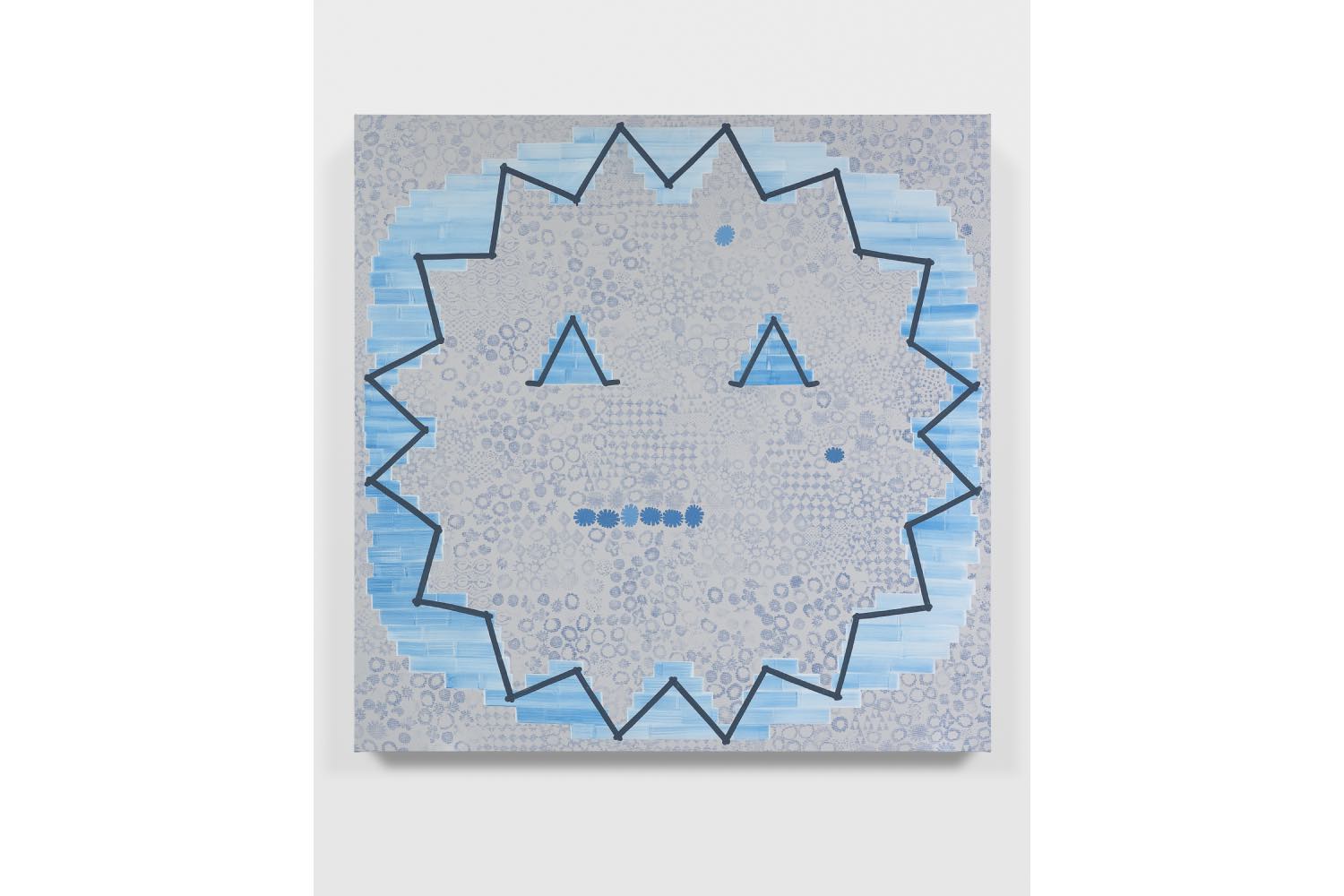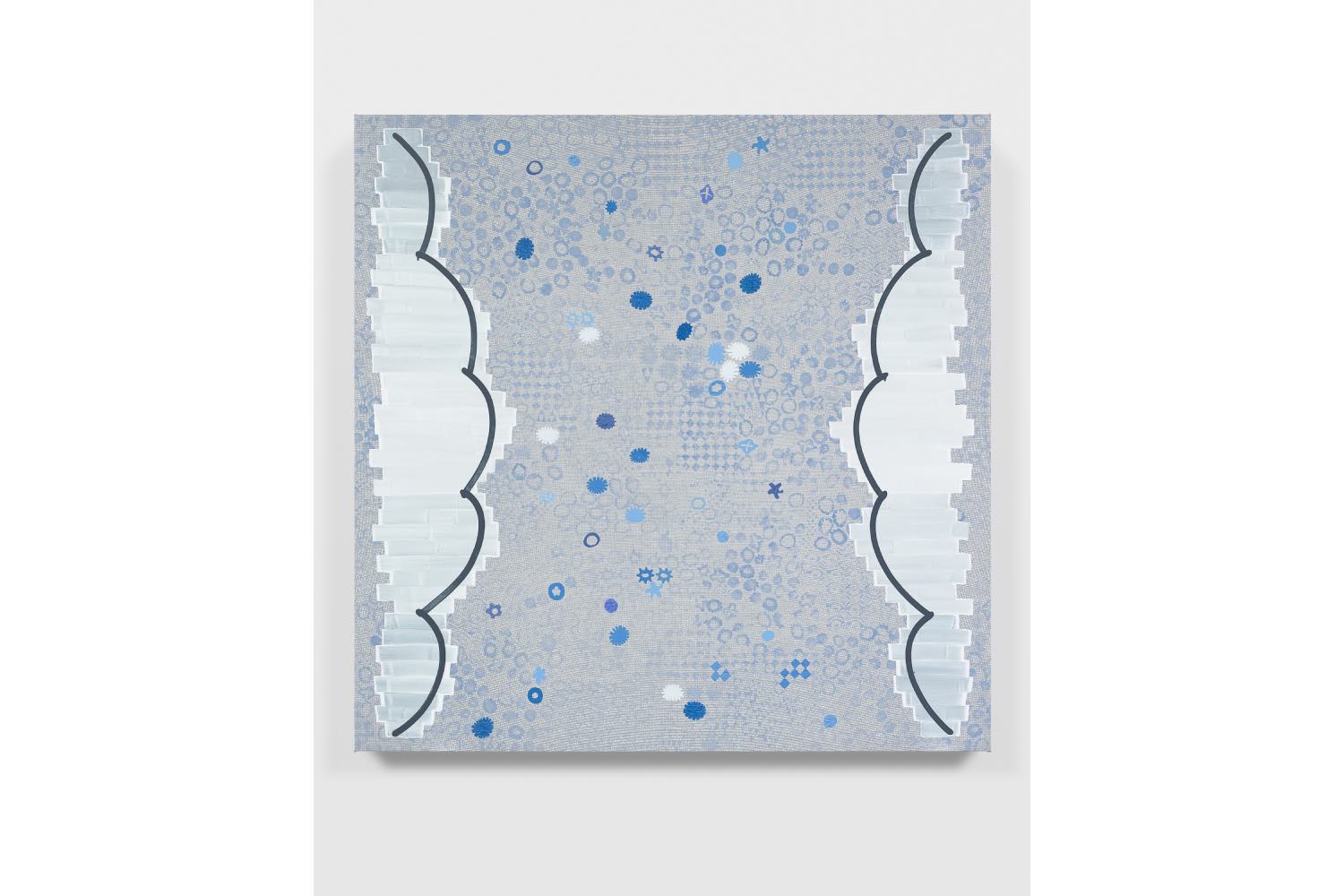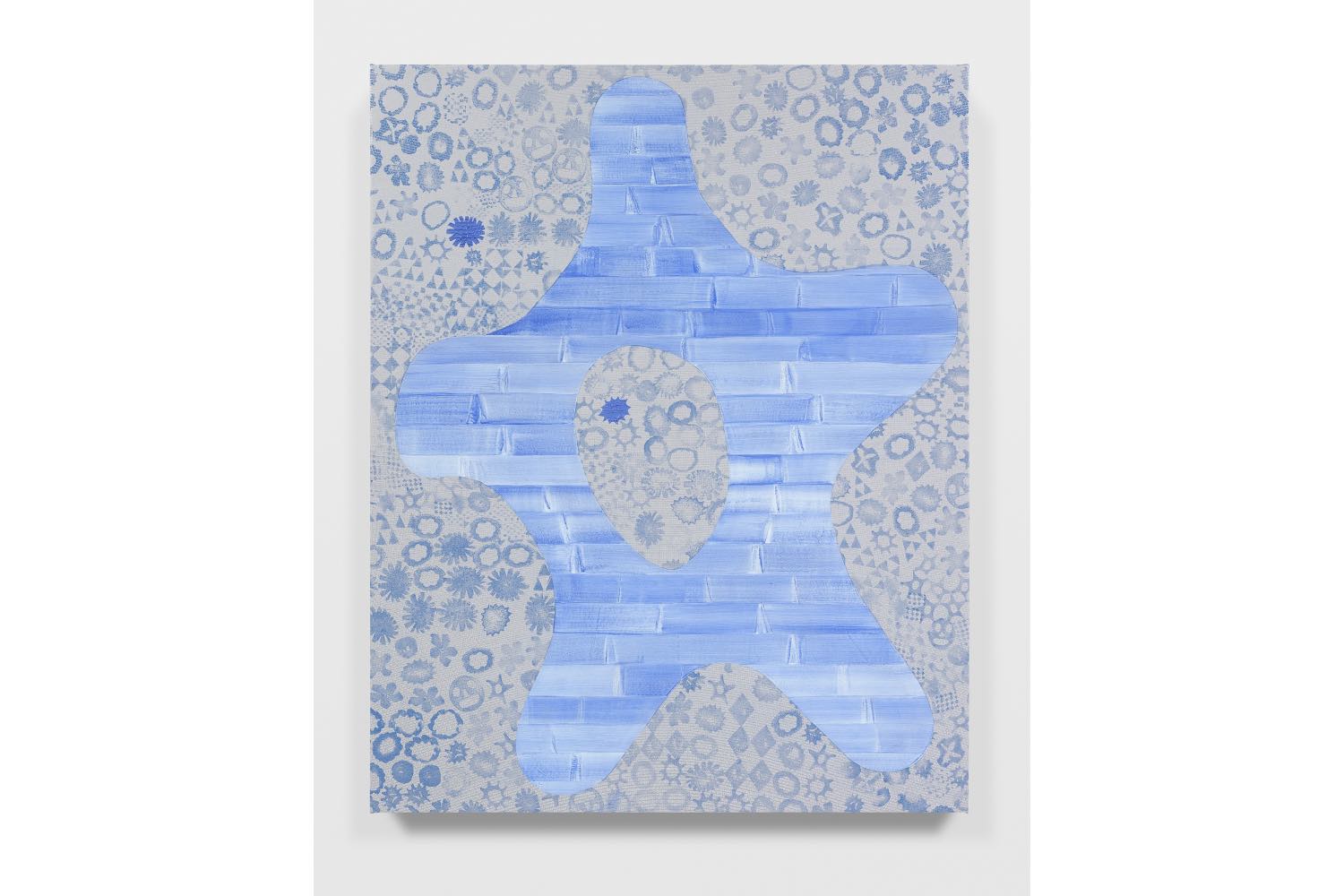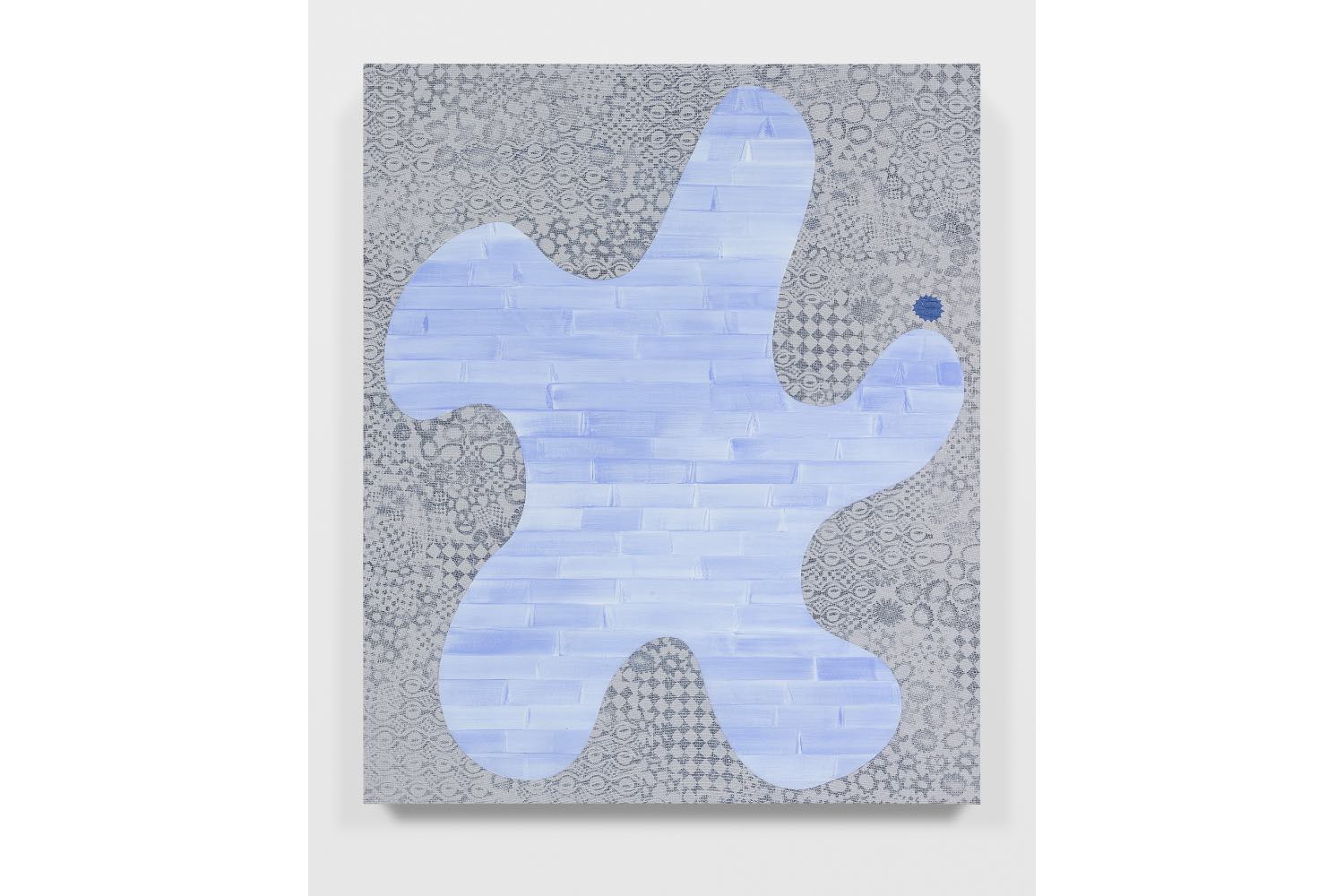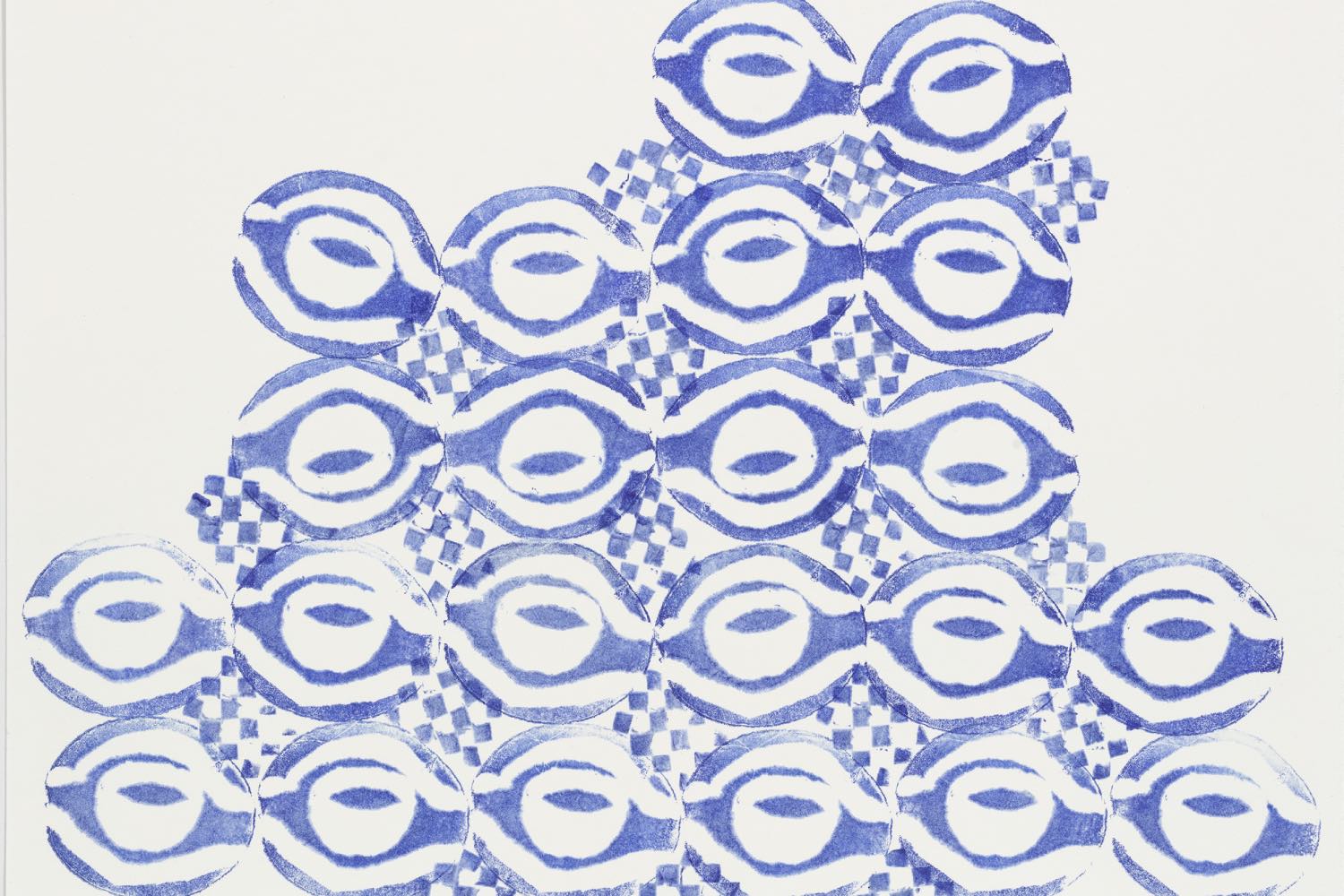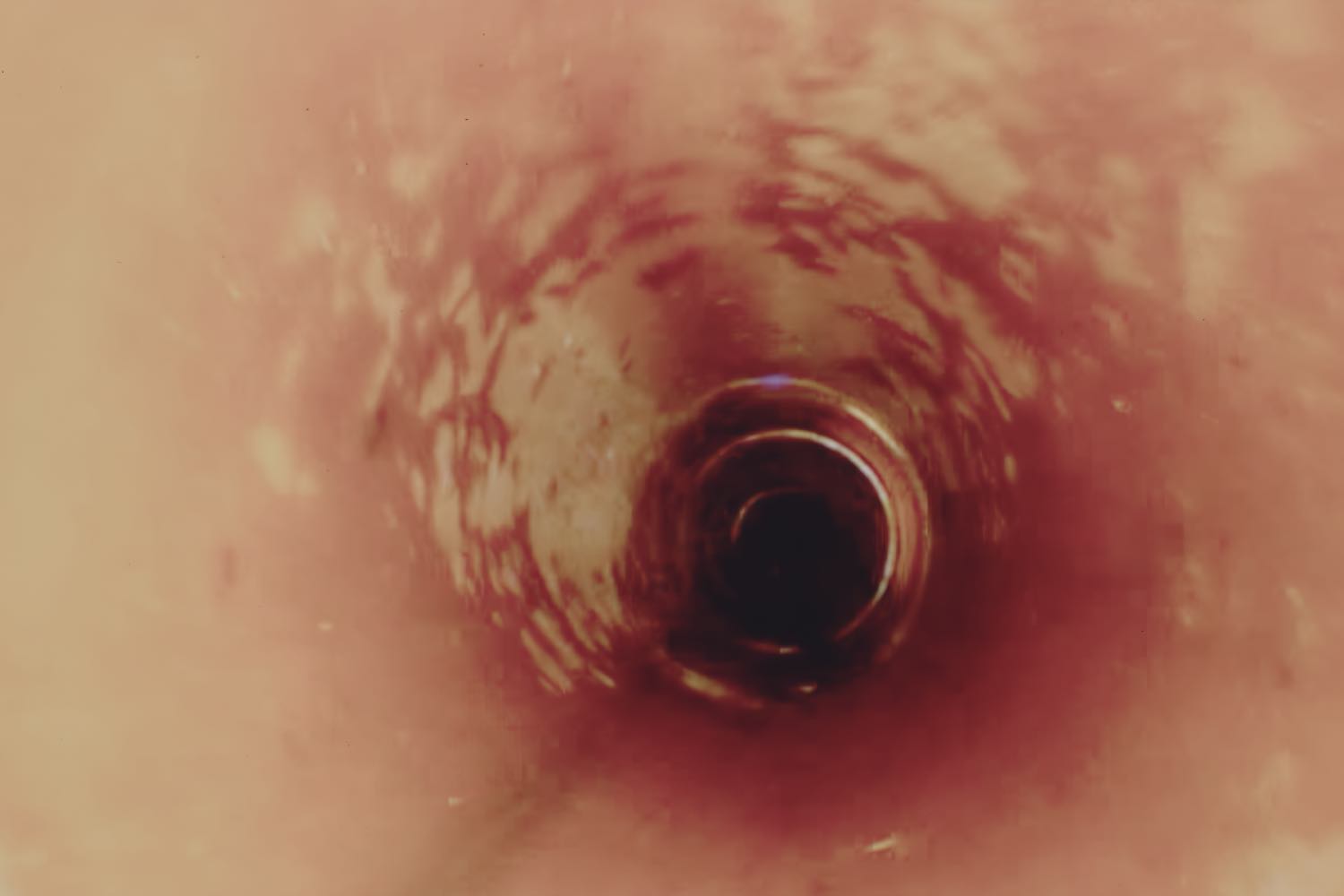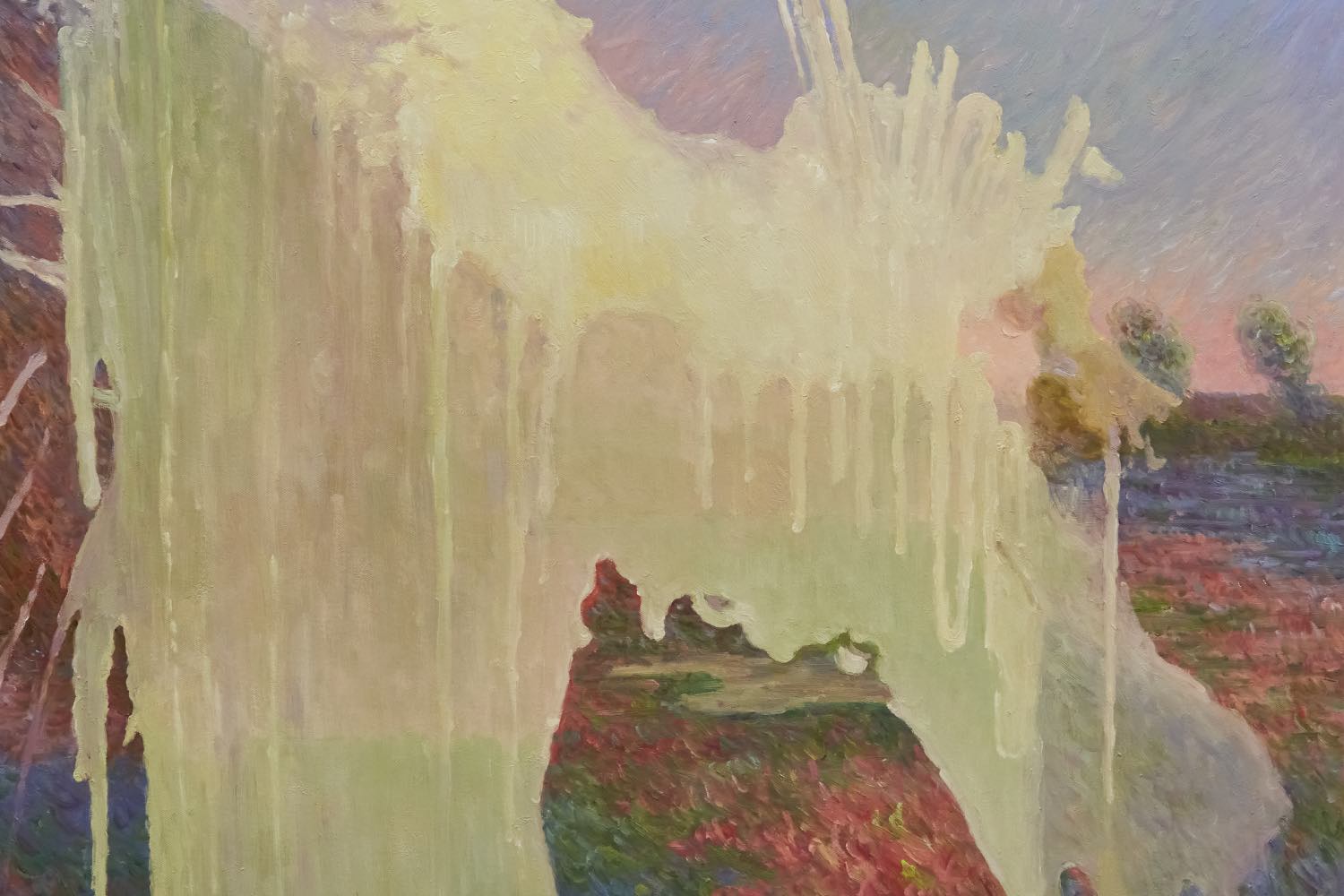Visitors to Austria’s capital often seek traces of Vienna circa 1900 – a time when Gustav Klimt painted his opulent, gold-laden masterpieces, the Wiener Werkstätte revolutionized textile design, and ornamentation was celebrated rather than condemned. Echoes of this iconic era subtly thread their way into Amy Feldman’s new paintings at Galerie Presenhuber in Vienna, spanning a network of references that enrich her abstract works with a suggestive figurative undertone.
For years, Feldman has been committed to gray, exploring the nuanced spectrum of this seemingly neutral tone in large-scale abstractions. Light and dark variations of the color are featured in icon-like paintings that activate its connotative richness in expressive shapes and signs set on an equally gray ground. For her Vienna show, “Good Fortune,” however, the New York-based artist has introduced a vibrant new hue to her palette. This striking, almost turquoise blue departs from the melancholy typically associated with the color, evoking imagined memories of the sea, a clear sky, or radiant sunlight — all in stark contrast to Vienna’s muted winter grays. Feldman’s pattern-like motifs (all the works are from 2024) recall the ornate gowns in Klimt’s portraits and the exquisite fusion of craftsmanship and technology emblematic of Art Nouveau. Using simple, hand-carved potato stamps adorned with star-like shapes, floral designs, and occasional rudimentary faces, Feldman created ornamental compositions on paper which were later silkscreened onto canvas. The natural drying and shrinking of the potatoes made each print unique, adding an irregular texture to the patterns and introducing variation within repetition.
Two of these designs, Marvel Pile and Tender Trace, are featured in the exhibition. Transposed onto larger canvas and collaged into intricate patterns, their playful ornamentation forms the backdrop for Feldman’s signature painted interventions, bridging abstraction and figuration. Sweeping, gestural outlines — reminiscent of magnified doodles — open up a dynamic pictorial space. In Happy Spell, an abstract sun stretches to the edges of the canvas. In Good Fortune and Sky Secret, soft-edged, star-like brickwork overlays the printed backgrounds. The azure stripes in Celestial Screen and Wonder Margin — whether flat or textured — enhance the layered shades of the potato print patterns. Some stamp impressions are highlighted with an additional layer of blue paint, standing out like modern-day emojis. In Celestial Screen, these forms converge into a whimsical face set against an imagined sky.
Despite their playful energy, these works are meticulously crafted hybrids that reflect on traditional craft techniques and the interplay between painted and printed elements. By focusing on the boundaries between these pictorial realms, Feldman skillfully fuses a conceptual aesthetic with atmospheric resonance. The blue light emanating from the works suggests not only natural sunlight but also the artificial glow of screens, highlighting the tension between analog and digital worlds. This juxtaposition of painted and printed symbols activates the unique potential of each medium.
Feldman credits her young daughter for inspiring her interest in potato prints. Yet much like doodling — a process Feldman uses to explore ideas and forms — the creation of these large-scale works requires a precise balance between spontaneous discovery and deliberate execution. Achieving this balance demands careful consideration of scale and composition.
The well-known gray works, with their bold, opaque shapes, draw viewers into a contemplative depth, absorbing figurative allusions within their muted tones. By contrast, Feldman’s new blue series extends an open invitation to step into luminous, imaginative spaces. Informed equally by childlike wonder and formal precision, these works transform the idealized nostalgia of a bygone Vienna that served as their tongue-in-cheek inspiration into a suggestive reflection on nothing less than painting and the color blue.

